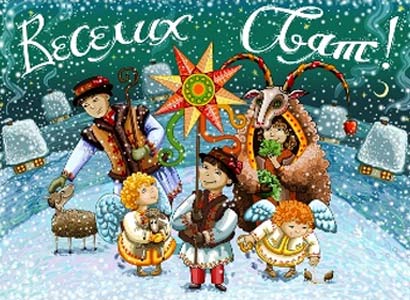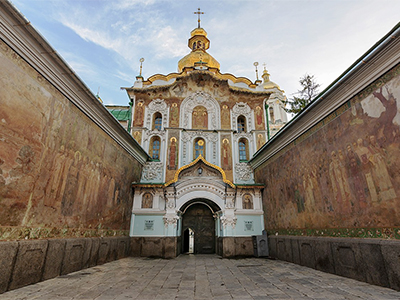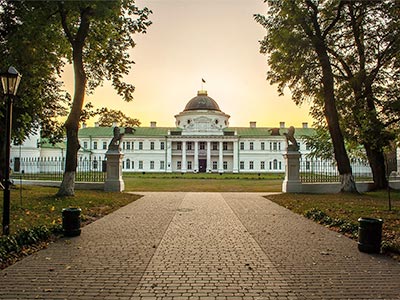 04.01.2023
Chrismas holiday season and traditional dishes of Ukraine
04.01.2023
Chrismas holiday season and traditional dishes of UkraineThe period from Christmas and well into the New Year, is marked in Ukraine, a predominantly Christian land for the past millennium, by a string of holidays which are often collectively referred to as Christmas Holiday Season. Though thoroughly Christianized, these holidays still reveal a deeply traditional character, with some rituals and customs dating from the pre-Christian times. There’s hardly anyone who is not looking forward to Christmas festive season can hardly fail to affect both the old and the young, believers and atheists.
Christmas Day date in Ukraine
The calendar of the traditional winter festivities in Ukraine is different from that which is used in the European countries or in America. The thing is that the Ukrainian Church (unfortunately) still sticks to the old, Julian calendar, whereas the state and all the secular institutions use the “new” Gregorian calendar. After the victory over Russia, we will definitely eliminate this misunderstanding. The difference between the “old” and the “new” calendar is thirteen days — that is why Christmas is celebrated by the Orthodox on January 6 rather than on December 25.
Christmas Eve
Svyatvechir (Holy Evening), or Christmas Eve, was a very special occasion. Didukh — a sheaf of oats or rye was carefully and neatly arranged for the occasion, and then it was brought into the house and decorated with colorful ribbons, candies, flowers cut from paper, and red berries (Christmas tree is a much more recent feature). When the first star appeared in the sky, the families sat down to the Svyatvechir dinner. It had to have twelve dishes, to correspond to the number of months in the year.
The table was strewn with flagrant dried herbs and hay and covered with a flesh table cloth and decorated with embroidered rushnyky — decorative towels. Kutya was an obligatory dish. Christmas being a family holiday, the most popular drink was nonalcoholic uzvar. All the dishes were still Lenten fare, and only one meal, Svyatvechir dinner, was allowed (only small children could have something to eat during the day).
Christmas
Christmas (Rizdvo), was quite a different thing as far as food was concerned. But the day began with attending the Christmas service in church.
At table, tradition did not allow the use of knives, so one had to do without them.
Meat and fish were welcome on Christmas day, and all kinds of deserts made their cheerful appearance — medivnyky (dishes made with honey), and sweet pies were thoroughly enjoyed.
Alcohol was also allowed to be had on Christmas. Traditional alcoholic drinks were all kinds of nalyvky and nastoyanky. Horilka began to be widely consumed at a much later date.
New Year
New Year was celebrated in Ukraine on various dates. Today the 1st of January came to be a usually accepted date.
Shchedry vechir is the New Year Eve. Carol singers go from house to house, greeting the host with special songs “shchedrivky”.
The food served at the Shchedry vechir dinner included all kinds of dishes, both with meat and meatless. In the times of old, people in the countryside had their Shchedry vechir dinner rather early in the evening and when shchedruvalnyky came knocking at their doors, some of the food and drink was shared with them, and gifts exchanged. It was considered best to “see the New Year in” on your sleep.
On January 1, social visits were exchanged, well-wishing continued, ample festive meals were consumed.
Epiphany
Epiphany was of a much less boisterous nature. On the day before Epiphany, people went without food until dinner when they could have meatless dishes, borsch, varenyky, cabbage and fish. Kutya was also made and ritually eaten. Dinner could be eaten after the nightfall.
Tradition required that as much noise as possible was to be made after dinner — children and grown-ups repeatedly armed themselves with sticks and stmck wooden fences, empty pots or anything else that could produce loud sounds (in later times, guns were fired). It was believed that all this racket would be conducive to future wellbeing, fertility of the land and of the cattle.
❤️Our winter Carpathian tour offers cool features like horse riding, skiing, and quad biking in thick snow. Book NOW!
Didukh, which had been kept in the house since before Christmas, was taken out and burned “to produce warm air” — an invitation for the spring to come soon.
On the day of Vodokhreshche itself; the water in the lakes and rivers (if there were not any in the vicinity, then the wells would do) was blessed by priests. The blessed water was believed to possess healing properties. After it was blessed, it was taken in containers home and kept in front of the icons for the whole year, until next Epiphany. Cattle and fowl were sprinkled with this water; it was given as medicine against deceases; the newly born were washed in it; the newlyweds were sprinkled with it, as well as the graves on the day of the funerals. Young girls washed their faces in the blessed water of the rivers and lakes, right in the holes cut in the ice.
In other words, the blessed Vodokhreshche (Epiphany) water was a feature of life that followed one from birth to grave.
Vodokhreshche dinner was supposed to be meatless, but a variety of dishes was supposed to be served — the more dishes the better.
We hope that several recipes of some of the traditional dishes that were made for Svyatvechir, Christmas, New Year and Vodokhreshche, offered here, may help you get the feel, or rather the taste, of the Ukrainian traditional cuisine.
-
 27.02.2024
World of pysanka
Embark on a journey into the captivating world of Pysanka, the Ukrainian...
27.02.2024
World of pysanka
Embark on a journey into the captivating world of Pysanka, the Ukrainian...
-
 29.01.2024
Exploring the Treasures of Kyiv’s Lavra Monastery
In the heart of Kyiv lies the venerable Lavra Monastery, a testament...
29.01.2024
Exploring the Treasures of Kyiv’s Lavra Monastery
In the heart of Kyiv lies the venerable Lavra Monastery, a testament...
-
 13.01.2024
Kachanivka, Eden on Earth
Rich in history, it hosted renowned artists, notably poet Taras Shevchenko.
13.01.2024
Kachanivka, Eden on Earth
Rich in history, it hosted renowned artists, notably poet Taras Shevchenko.

